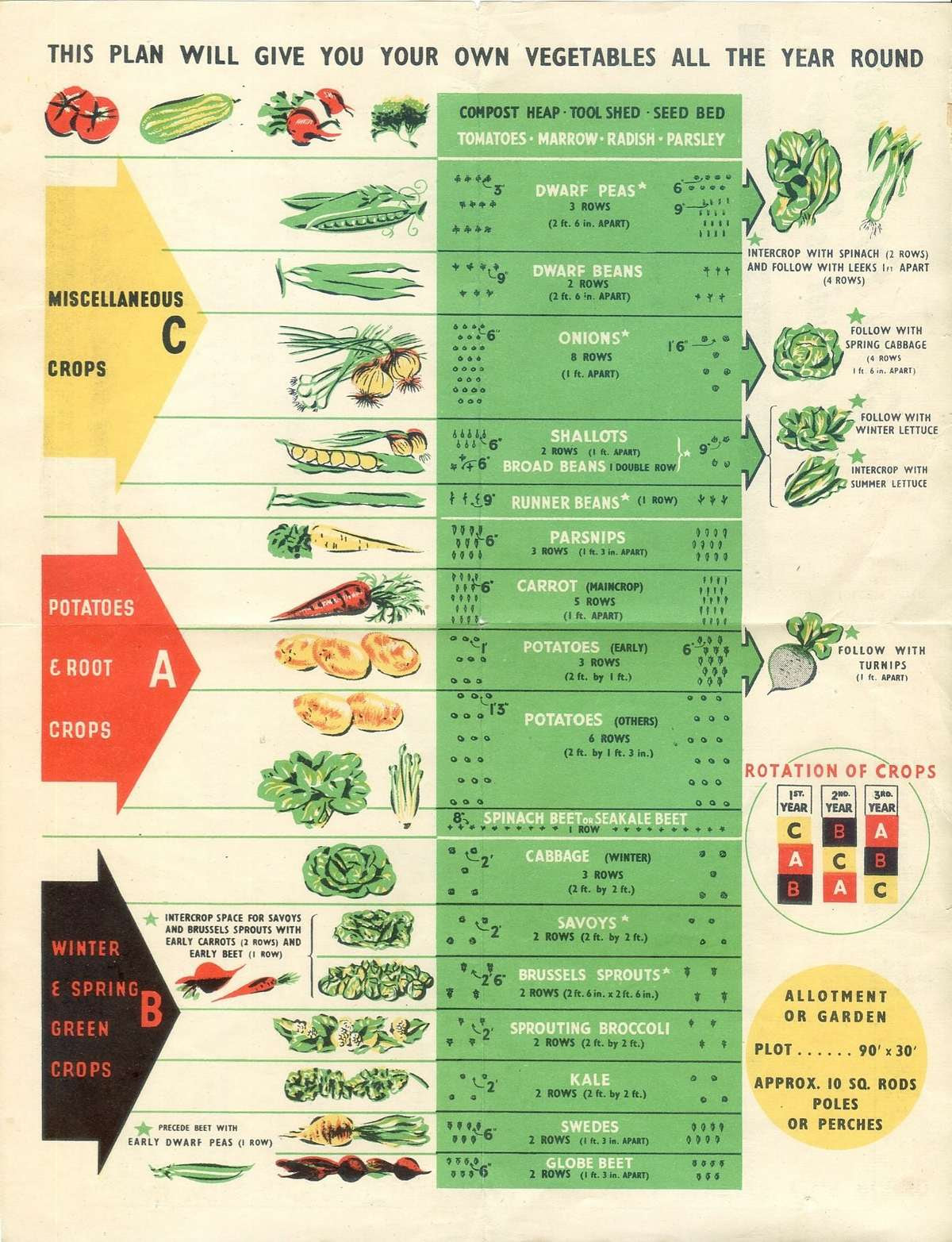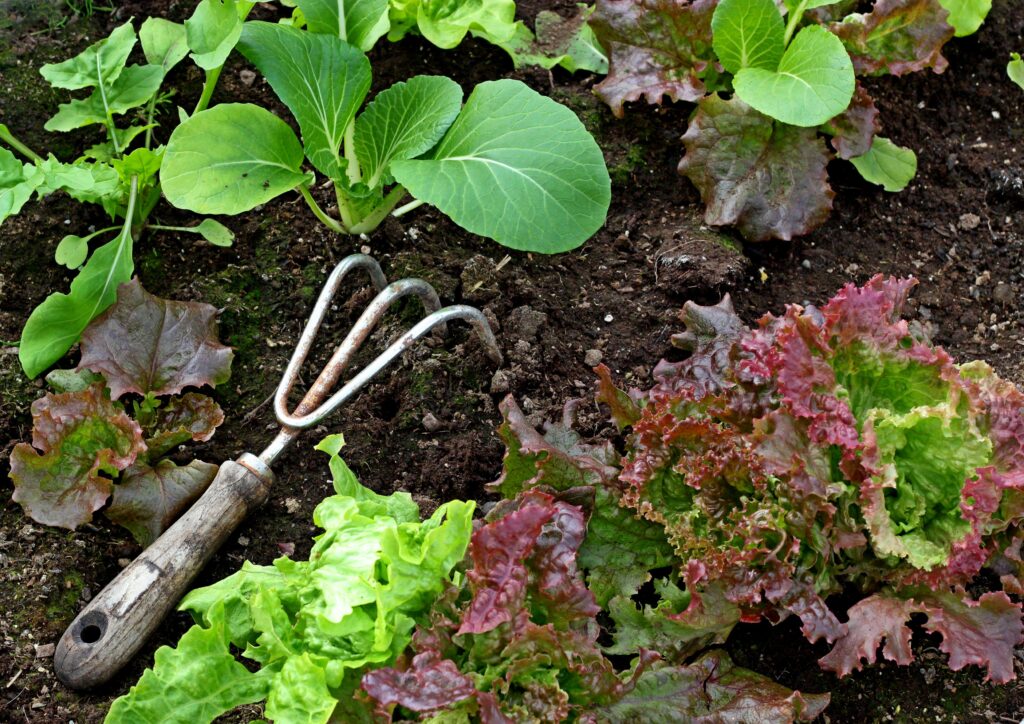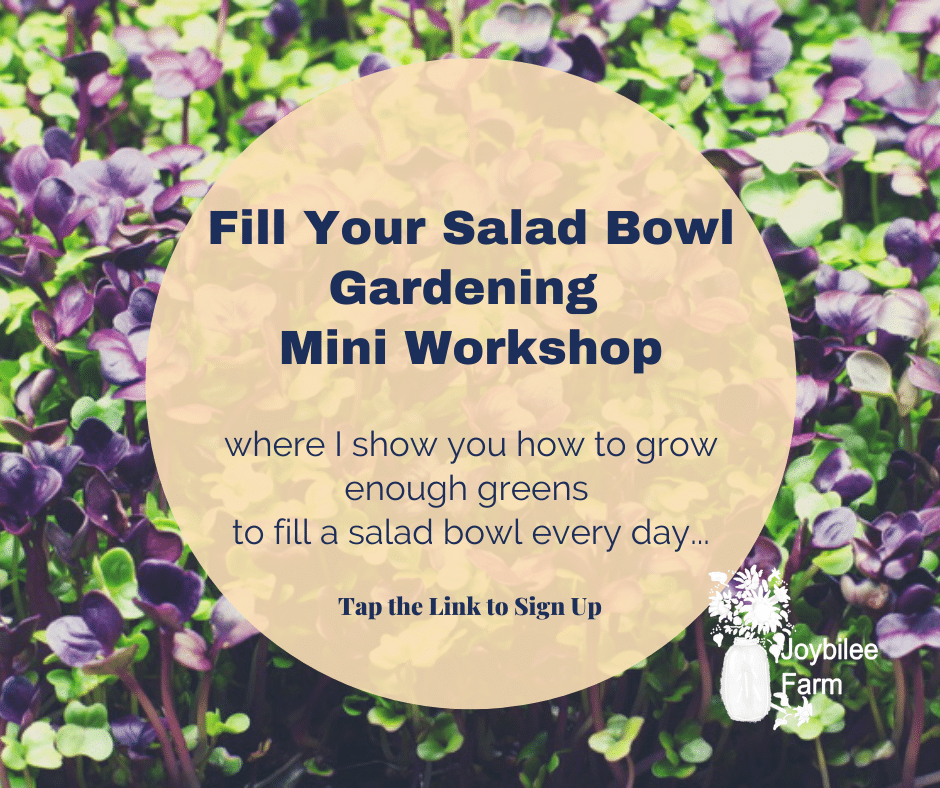During both WW1 and WW2 governments of the UK and North America encouraged their citizens to plant “Victory Gardens” or “War Gardens” to supplement their food rations. It would be beneficial to revisit that as we plan our summer vegetables and herb gardens and consider food security goals.
Also see this post:
Family Garden: Planting and Planning a Year of Food

You’ll see an emphasis on root vegetables and alliums for storage, cruciferous vegetables which have a long harvest period, and peas and beans. Spinach beet and seakale beet are perpetual spinach and Swiss chard, respectively, which can be harvested over and over from a single planting each season.
Tomatoes, parsley, zucchini (marrow), and radishes are relegated to the borders of the garden. Lettuce was grown as a short rotational crop between other plants.
Other crops that may have been included were kohlrabi, a long storing brassica, cucumbers that could be preserved as pickles, and cabbage or kale crops that could be used fresh, cooked, or preserved as sauerkraut. Root crops that were included were turnips, beets, rutabagas, potatoes, carrots, radishes, and many others.
Much of the gardening push was to leave open the grain and transportable crops for shipping to the troops, true for both UK and Americans. Eleanor Roosevelt even grew a victory garden on the White House lawn, instead of the lawn. At it’s peak, civilians were handling much of the burden of their own fruits and vegetables due to these victory gardens. Some were even grown on rooftops, as structure and space allowed.
Garden scraps were fed to hens or rabbits to supplement the grain ration, providing eggs and meat, and manure for the garden — essential for good crops year after year. Hay was also gathered from the commons, or public lands, to supplement hens and rabbits, during this time.
If you’re looking for seeds for your own Victory garden, source from heirloom and heritage seed companies. They have open pollinated, and true-to-type plants that you can save your own seed from.

How much land do you need for a garden?
People often ask me how much land they need to start a garden that will feed their family year round. This UK government plan suggests 2700 square feet of garden space or a 30 x 90 foot plot. The average family at the time of the world wars had 2 children.
This plan is a great place to start if you are just beginning to think about what to plant for a survival garden for food security and to cushion your family from rising costs and inflation. Tweak the size of the garden for your family size, if you have more or fewer kids than the average, or if you’re a single person.
Climate considerations
The UK climate is milder in winter, and cooler in summer than most of North America, so this plan will need to be adjusted for your area. (The West Coast is the exception with Vancouver Island being a close match to the climate of Wales, and Southern UK)
I am in Zone 3 with a 60 to 90 day frost free growing period. Potatoes are a mainstay crop for a survival garden here, along with other root vegetables like onions, carrots, parsnip, and beets. Pumpkins and corn are hit and miss here — if the spring is colder they won’t mature early enough. But with a warm spring they can produce abundantly. If you live where you have at least 100 to 110 frost free days, add pumpkins and corn to your survival garden list.

Medicinal herbs and natural remedies
Medicinal and culinary herbs are completely missing from this plan and should definitely be included both to add flavor and variety to your cooking and to offer antioxidants and herbal remedies for your family. Thyme, oregano, chives, peppermint, spearmint, catnip, chamomile, basil, dill, bee balm, and fennel will also attract beneficial insects to your garden and prevent some pests.
These herbs can be used for herbal tea, herbal oxymels, infused honey, to relieve sore throat, sinus congestion, fungal infections, and more. Many are perennials that need only be planted once. They can be harvested year after year.
For instance, Catnip is one of my favorite herbs for young children and is useful for cranky crying, teething, colds, stomach upset and fever. (Plus bees love it!) So much from one plant that you only need to plant once. See this post to learn more about catnip.
See this post to discover how to use herbs in the vegetable garden:
Companion Planting with Herbs to Increase Biodiversity and Improve Yields
Empty shelves: Don’t stress
If you are seeing empty shelves in the drugstore or the supermarket like many of us, know that you can grow your own food and effective remedies. It’s one of the first steps to walking away from the matrix. You can even “Ditch the Drugstore”.
In the second world war, lands were repurposed for growing local food. Churchyards, vacant lots, playgrounds, lawns, were repurposed into gardens to supply the communities. There are many options for ingenious growing available to us today, from decorative fruit and vegetables that fit into our landscapes, to simple gardens of beds or pots in backyards.
You can also get started with growing your own food on a small scale. There’s no need to jump into a giant outdoor garden if you’ve never gardened before. Get started on a smaller scale, with indoor microgreens, sprouts, and other low-risk, high nutritional value greens.
New to growing food and vegetables?
Check out the Fill Your Salad Bowl workshop and learn how to use 3 different growing methods, at home, so you can fill your salad bowl with super food, nutrient dense, greens every single day. These are greens you can use in your salad bowl, greens you can add to soups, stews, and pasta dishes, and even greens you can use in a stir fry.
In this mini workshop you will learn how to fill a salad bowl every day with food you grow yourself.
- Even if you don’t have any land.
- Even if there is 3 feet of snow covering your garden
- Even if you’ve killed house plants in the past.
- Even if you think you have a black thumb.
Have a look at what’s covered in this workshop and see if its a good fit for you, by clicking/tapping the blue button below.







Leave a Reply